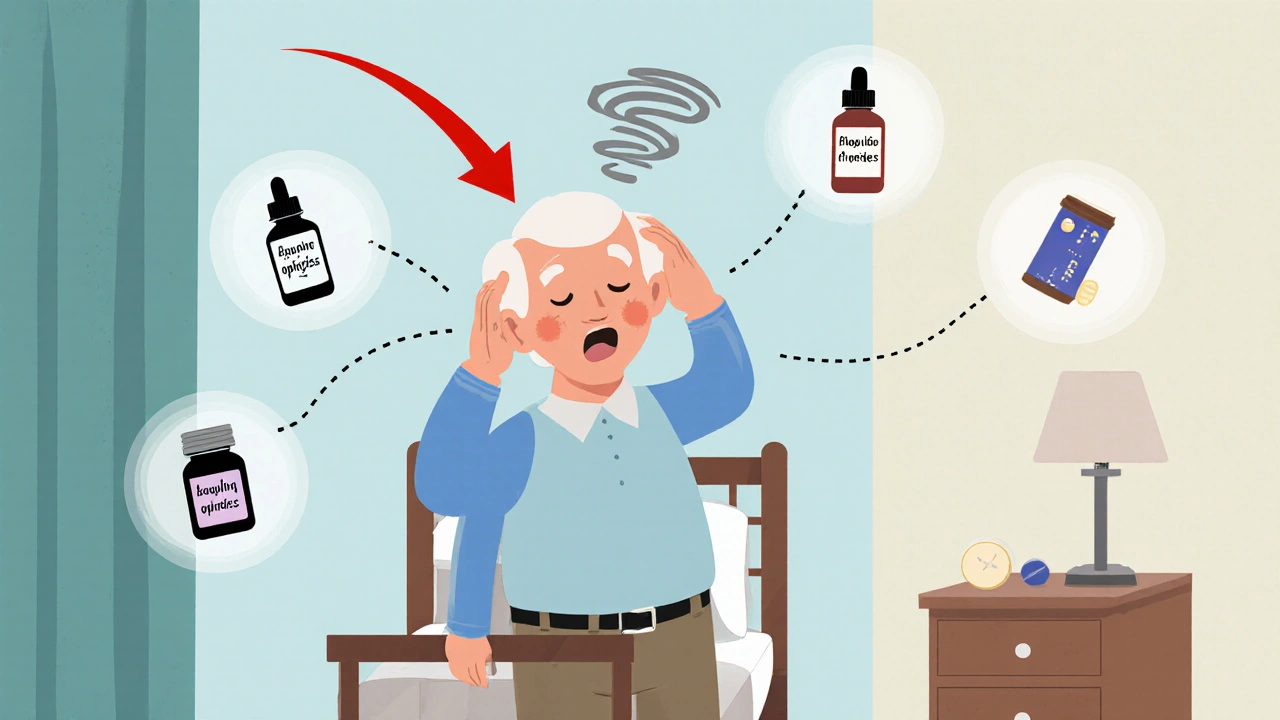
Medication‑Induced Orthostatic Hypotension: Why Standing Makes You Dizzy
Learn why certain drugs cause a sudden drop in blood pressure when you stand, how to spot the symptoms, and what steps-both medical and lifestyle-can keep you steady.
When you stand up and suddenly feel lightheaded or like the room is spinning, you’re experiencing dizziness on standing, a sudden drop in blood pressure that reduces blood flow to the brain. Also known as orthostatic hypotension, it’s not just an annoyance—it’s your body telling you something’s off. This isn’t normal aging. While it’s common in older adults, it can happen to anyone—even young, healthy people—if their body can’t adjust quickly enough when gravity pulls blood downward.
Orthostatic hypotension, the medical term for dizziness on standing, happens when your blood pressure drops by at least 20 mm Hg systolic or 10 mm Hg diastolic within three minutes of standing. Your heart and blood vessels should respond instantly to keep blood flowing to your brain. If they don’t, you get that fuzzy, weak, or spinning feeling. Common triggers include dehydration, standing too long, heat exposure, or taking certain meds like blood pressure pills, diuretics, or even some antidepressants. It’s also linked to conditions like diabetes, Parkinson’s, or heart problems—but often, it’s just a simple fix: drink more water, stand up slower, or check your meds with your doctor.
What you’ll find below are real, practical posts that cut through the noise. You’ll see how dizziness on standing connects to medications like carvedilol and metoprolol, how dehydration plays a bigger role than most realize, and why some supplements or herbal remedies might help—or make it worse. These aren’t theory-heavy articles. They’re guides written for people who’ve felt that sudden drop, who want to know why it happened, and how to stop it from happening again.

Learn why certain drugs cause a sudden drop in blood pressure when you stand, how to spot the symptoms, and what steps-both medical and lifestyle-can keep you steady.